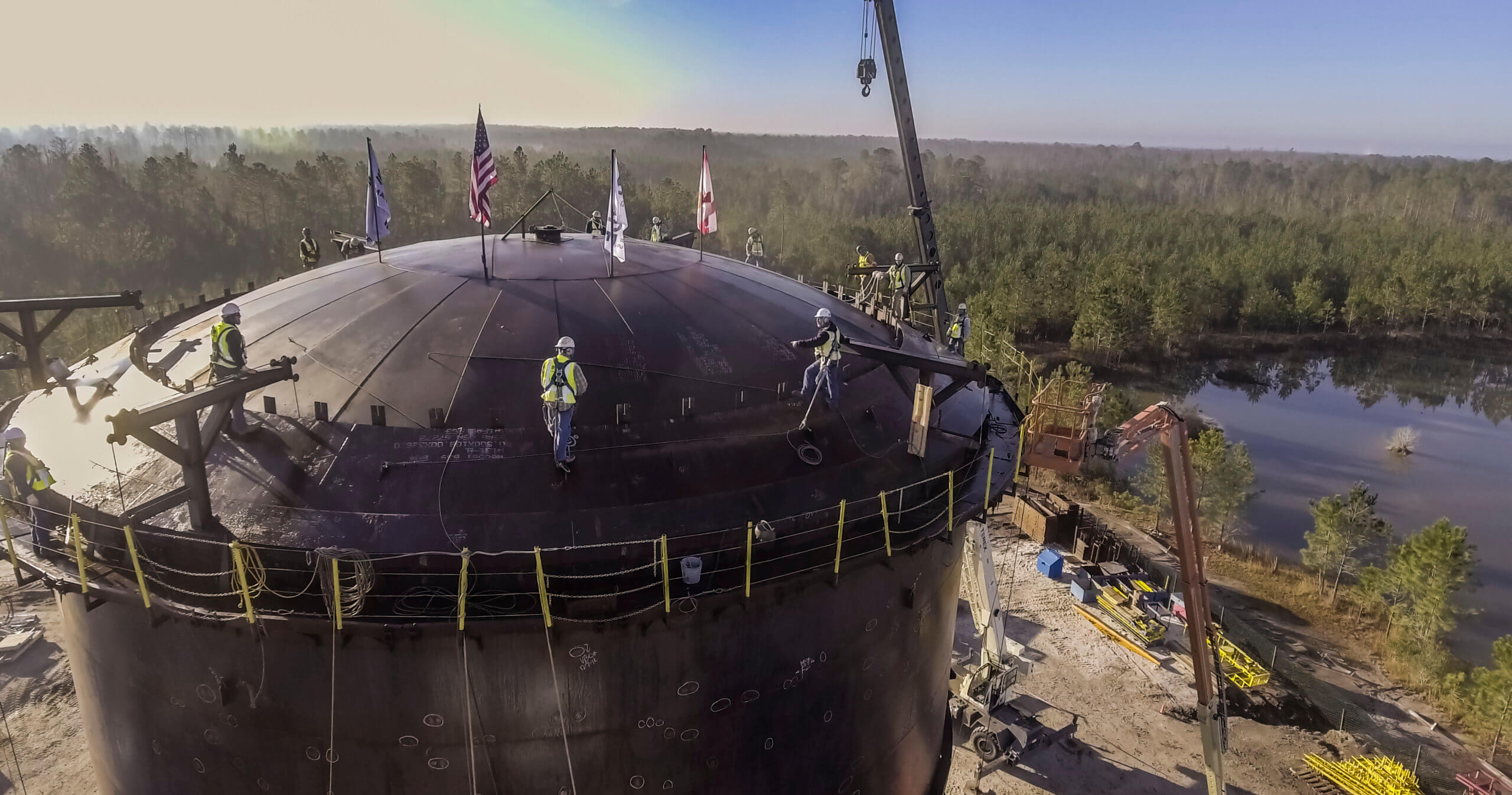An Introduction to LNG Storage Systems
Natural gas provides clean, reliable, and affordable energy around the world. Natural gas is a cryogen, meaning it is a liquid at very low temperatures. Natural gas can be efficiently and safely transported from areas with abundant resources to areas of high demand as a liquid.
LNG storage tank systems keep the gas in its liquid state for storage or transportation. These tank systems are complex and highly engineered. LNG storage systems use auto-refrigeration to keep the pressure and the temperature in the tank constant. This technology is actually quite old. The first natural gas liquefaction plant was built in West Virginia in 1917. Since then, many advances have been made to improve natural gas storage, but the systems function the same way.
API Codes and Standards
In the 1960s, the American Petroleum Institute (API) created standards for the design, construction, and material choices in storage tank systems. These standards help maintain safety and quality across the industry. API codes are also continually evolving to reflect new advances and best practices in the field.
LNG Containment Types
There are three main storage containment types for LNG storage systems: single, double, or full containment.
A single containment system consists of an inner and outer container. The inner container is designed to hold liquid and is liquid-tight. The outer container is designed for product vapor pressure. It retains and protects the insulation, but does not contain liquid if the inner container leaks.
A double containment system has a liquid and vapor-tight primary tank system. This system is built inside a secondary container that is liquid-tight. This secondary liquid container is liquid-tight but not vapor-tight.
Finally, a full containment system consists of a liquid-tight primary container and a liquid and vapor-tight secondary container. Both can independently contain the product. The secondary container controls vapor release in the event of a primary product leak. Another design feature of this containment system is thermal corner protection (TCP). TCP protects the base-to-wall joint on the outer tank. In the event of a primary container leak, TCP provides liquid tightness and thermally isolates the joint from the cold liquid.
Choosing a tank and containment configuration for an LNG facility is one of the first steps in the design and engineering process. Once an owner/ operator determines which system best suits the application, performance requirements can be established.
Tank storage systems are an important component of LNG infrastructure. They may be just one small component of the LNG infrastructure, but they are an important feat of engineering that keeps progress flowing. Matrix PDM engineers have extensive experience designing storage solutions for your critical infrastructure project. Whether you are looking for help with an aboveground storage tank, a bulk terminal, or a cryogenic storage tank, our expert engineers can help you design a storage tank to your most demanding specifications. Contact us today to learn more.
